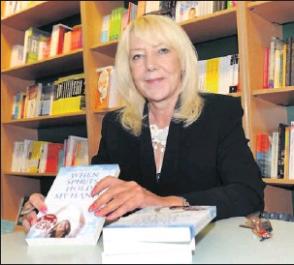In this sneak peek of a powerful article from our Spring 2019 issue, Davie Philip discusses how we can use new stories of hope and resilience to inspire ourselves to tackle the challenges facing our planet. To read the full article, pick up a copy of the magazine at your local stockist or subscribe here.
sustainable
Voya Skincare Review – Irish, Organic, Sustainable, Beauty Products? Yes Please.
Voya got in touch with me recently offering me a free sample of one of their products so that I could review it. Free stuff is hard to turn down and it will inevitably make one want to say lovely things about it out of appreciation for the fact that you got a treat. However, I reluctantly stuck to my gut and emailed back asking if it was locally produced and checking out if there was any aspect of their range that I could see as a beneficial and positive in a bigger way than just, “Ooooh, free stuff!”
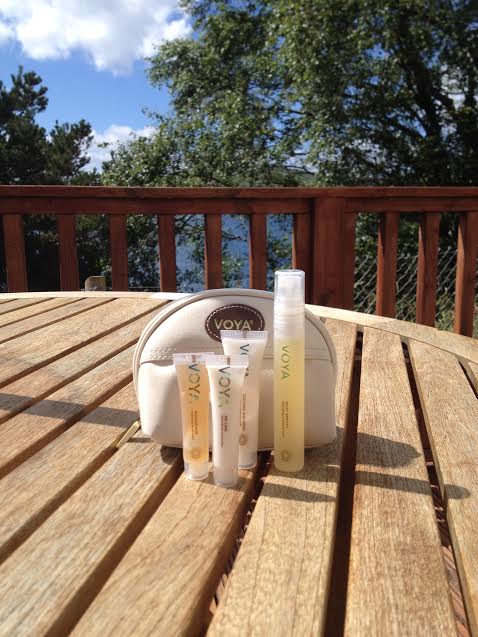
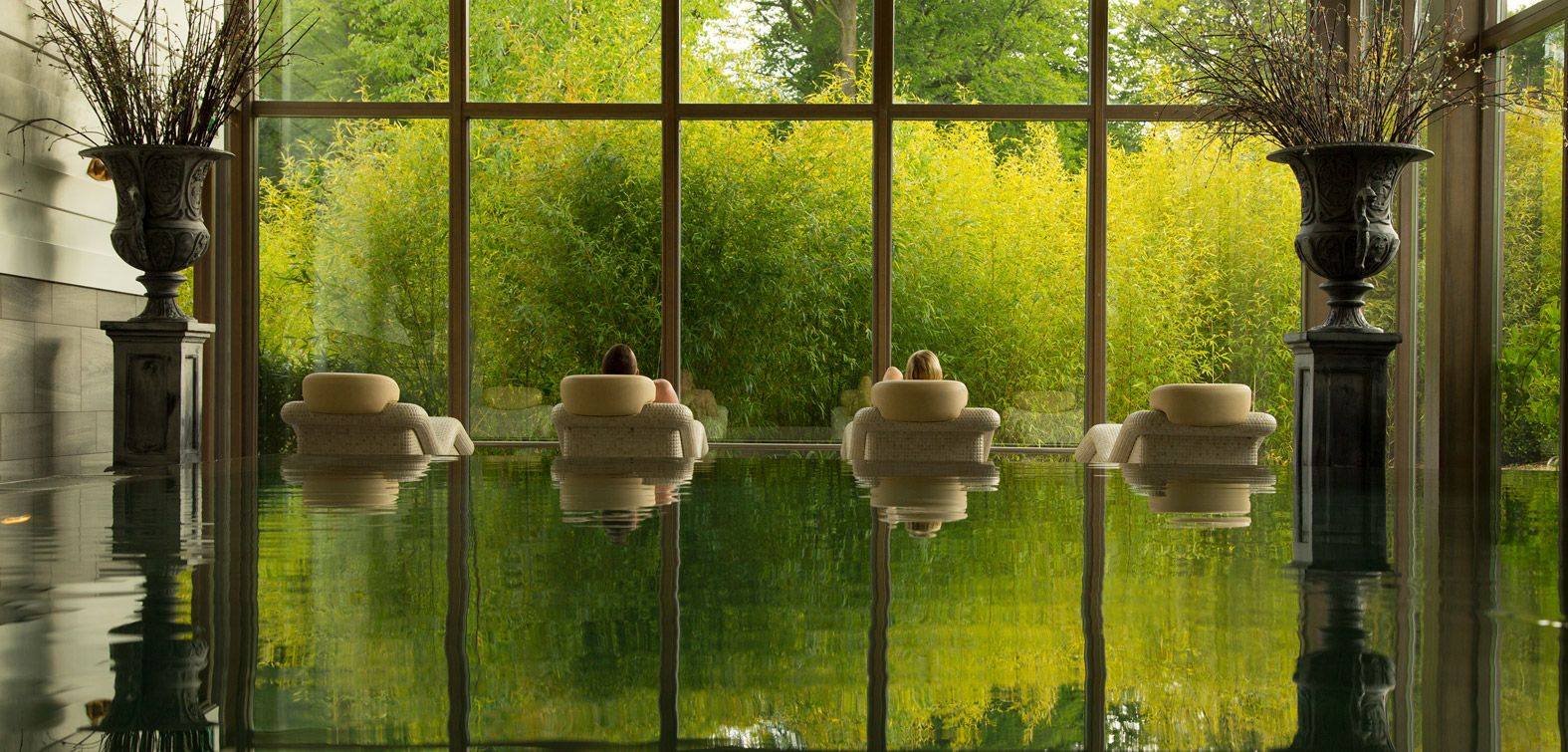
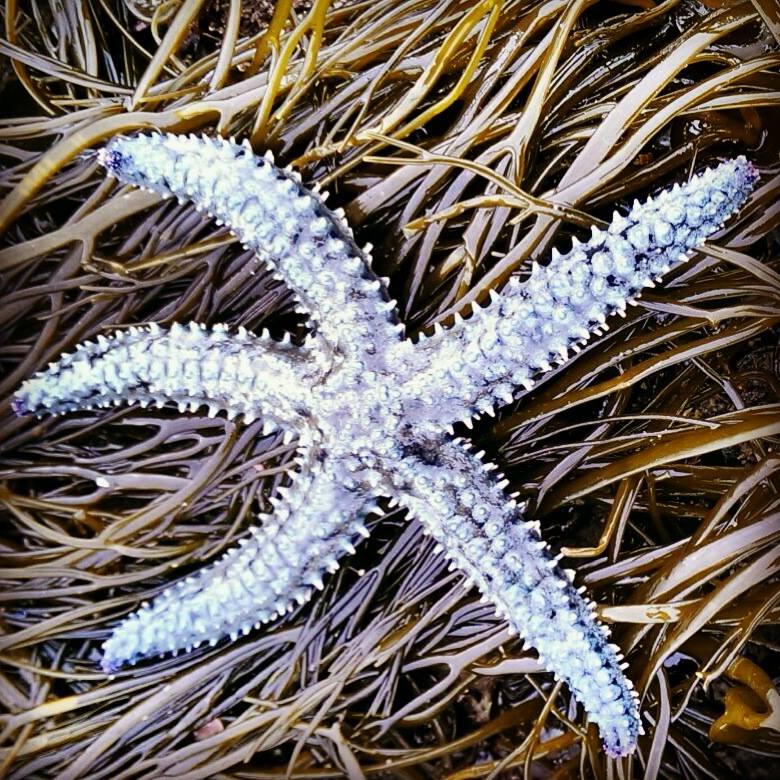
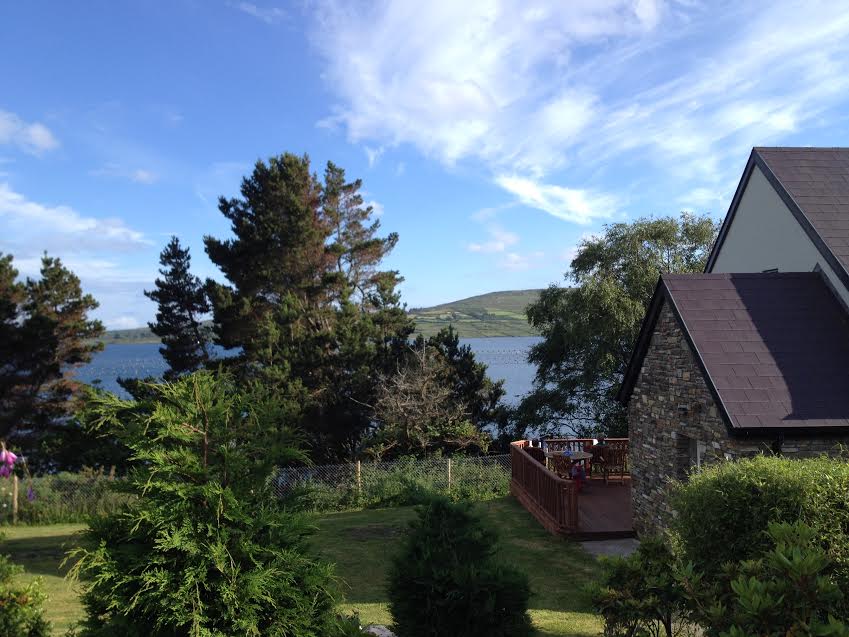
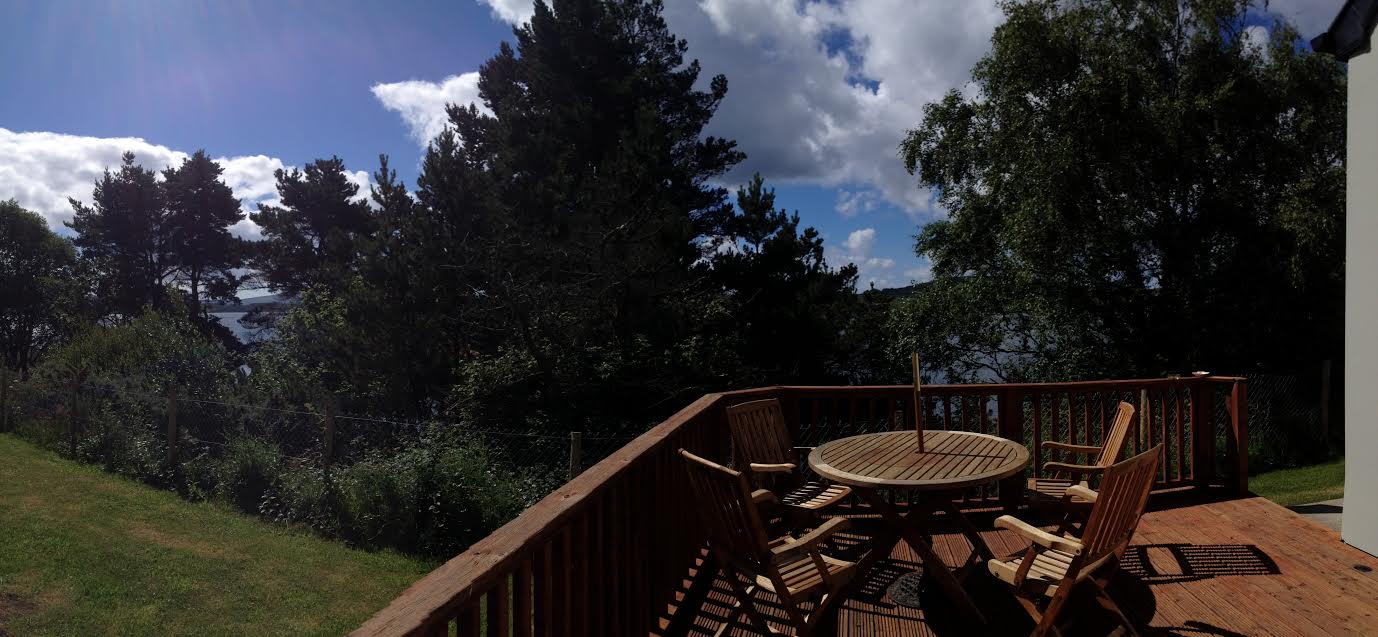
As it turns out, and to my sheer delight, Voya check every box I’d like to see checked in attempting to be somewhat socially aware about what products I buy. I may not always have the budget for products that check all the right boxes, but I like to know what my options are. “Send me the treats!”
About Voya
Voya began as a seaweed baths business in Strandhill in Sligo. People who visited the baths often wanted to ‘take the experience home with them’, so the family-run company had to begin thinking about how they would do this and still maintain the integrity of the local business they were currently running.
“The challenge was significant, and was to be the germ for VOYA. We knew that conventional cosmetics use chemicals that could destroy the beneficial properties of our seaweed and also damage the environment. As a family we agreed that this was an unacceptable compromise and would go against all our instincts. Neil’s brother, Mark, tried to source genuinely organic seaweed products but found none. It soon became apparent that if we weren’t willing to compromise, we would have to go through with the long and demanding voyage towards creating a new type of cosmetic: the first genuinely organic seaweed-based cosmetic products in the world.”
They dry the seaweed naturally, using a method that keeps all of the important things in tact and have worked with natural cosmetic scientists, marine biologists and dermatologists to create their range.
The Products

I tried out their Cleanse & Mend cleanser, hydrating mask, Ritzy Spritzy toner and Me Time moisturiser, all packed into a handy, little, travel-sized kit. I threw it into my bag when going away to the gorgeous Bearhaven Lodge on the Beara Peninsula in the west of Ireland. (As a side note, one of the prettiest places I’ve ever stayed and two of the loveliest characters running the place.)
I’m not an expert beauty reviewer but I know my own skin. The products are lovely to use, smell great without having too strong a scent, and my skin looked every so subtly more ‘glowy’ and refreshed after just couple of days. I tend to change products pretty frequently but I consistently notice better results from organic products and Voya reinforced that further.
They recommend leaving the cleanser on for ten minutes and washing it off and as I’ve not used a cleanser that you had to do this with before, I asked them why, and if it was still necessary to use exfoliator or if somehow by leaving it on, was it doing the exfoliating?
“Basically when you leave it on it stimulates and tones the skin thanks to the unique hydrating powers of the algae extracts… that’s why they recommend leave it for a few minutes. And yes, you should still need an exfoliator but better if you use it twice per week instead of every day.”
What’s great about leaving something on for ten minutes is that you can run around doing other bits and pieces and feel like you’re multi-tasking. Lastly, and I’ve mentioned this before elsewhere, but my instincts are that local ingredients are probably the most beneficial for local skin, local weather etc. Nature so often provides us with what we need at the correct time and in the correct place. It’s a theory worth testing out with your beauty products as well as your diet. Speaking of diet – I’d also note that no skincare product will every fix everything if you’re not respecting your liver and your diet. Your liver has a huge impact on your skin and your skin is the biggest organ you have, so to take care of it fully, work from the inside out as well as the outside in.
The Price
Their products are priced at what I would consider the more expensive side of the spectrum, the ‘MeTime Moisturiser’ for example is €57, we don’t all have that to spend on a moisturiser. However, if this is the kind of money you spend on products, I’d definitely give it a go. Or try out their travel kit to see if it suits your skin. Even the teeny weeny sample I had went a long way, so it will last. My current ethos is the only reason you should be spending ‘big money’ on anything is if you can see why it’s expensive and you know you’re supporting something good. Big brands have big marketing budgets, so it’s a good idea to do your homework on the business carefully before buying in to the reviews written by the bloggers who got the free stuff. Products of any kind, from clothes, to pizzas to cosmetics, that are mass-produced with no real respect for the environment, and/or produced without consideration for how the chemicals affect the active ingredients contained in them are flying off the shelves for the same price and more. It’s costly to produce products locally and organically, but it’s better for all of us long-term. So If you want to spend sixty quid to spend on a moisturiser, I suggest trying one that’s considerate about our precious little world.
However…
You don’t need this product to be happy or beautiful. You are both of those things already. Voya is simply a lovely option to know about.
PS. They also rescue baby seals.
The Chocolate Factory
Ben Millett
The Chocolate Factory is a new creative community developing in the old Williams & Woods building on King’s Inn Street in Dublin.
The first concrete building in Dublin city is being rejuvenated to become a creative hub comprised of studio spaces for design, art, music, dance, photography and many other creative areas.
The ethos of the Chocolate Factory is a creative community where community is the centre of focus with everybody helping each other out. We are also focused on reusing and upcycling anything we can as part of the development and building work going on in the CF, and want to be as sustainable as possible in every aspect of the project.
Ireland’s first rooftop Urban Farm is being created on the roof of the building and aims to produce and educate people on various horticultural techniques and how to create their own urban farm.
Already, the Chocolate Factory has artists, designers, bands, photographers, upcyclers, sound designers, Buddhist martial arts and healing experts, horticulturalists, a creative baker, fashion designers, software designers and many more all becoming part of the community and fuelling the diverse creative atmosphere that is developing.
A cafe and restaurant is planned for the ground floor and it is hoped to be open in the next few months, combining a great place to have a coffee or a meeting, with some roof grown food in a creative and industrial atmosphere of the expansive ground floor.
This project is breathing some life back into King’s Inn Street and hopefully it will help to expand the creative sector of Dublin to include this beautiful old building and its resident creatives.
Pick up a copy of Positive Life Magazine’s Spring 2013 issue in your local health food store. Or subscribe online for €15 and have it delivered to your door four times a year.
For more on the Chocolate Factory visit www.chocolatefactory.ie
Other spaces worth a look: wwwblockt.ie and www.fumballyexchange.com
What is it about Earthsong Camps that have people flocking back every year?
You know you’re nearly at the Earthsong field when you start to spot the road-signs saying “SLOW – Fairies Crossing.” That’s the bit when your heart throws off its chains and you begin to inhale properly again.
Earthsong Camps came into being in 2007, andthis year three separate camps will run between May and late July at venues in Tipperary and Clare. They were the dreamchild of renowned drum teacher and community musician John Bowker, with the aim of creating a magical healing space that offers an escape from life in the “system”. The camps offer a place of safety for people to come and be themselves – “a nature reserve for human beings,” as Bowker calls it.
What this looks like on the ground is a page from a kid’s storybook – a field with circles of tents, a forest, giant-sized dream-catchers swaying in the breeze, a café where the seats are bales of straw and at the centre of it all a grand Big Top which serves as the meeting place for all sorts of important events. A sign on the fence reads: “This field may contain nuts,” and for anyone who ever felt at odds with “normal” life, the place is like home.
All of the Earthsong Camps are strictly drug and alcohol free, which is a rarity even among eco-friendly festivals. No electronics are allowed on camp, and phones can only be used offsite. The idea is for everyone to “be here now” – to be properly available to connect with yourself and others and not to miss your own experience. Rather than a hardship, the rules are accepted more like a gift – a rare escape from the pull of the digital world. All music onsite is created by the campers – an empowering experience for anyone who has previously only connected with music as a passive listener.
Earthsong Family
The safety of this world without alcohol and drugs makes Earthsong an especially appealing place to bring children and teenagers. For little ones, their days at camp offer them something most have never experienced before – the freedom to explore nature, people, creativity and a model of human relationships that they may never see any other time. To see a man hug another man and hold him while he cries, to cook on an open fire, to sit in the middle while around them a bunch of unconnected grown-ups learn to sing a harmony so beautiful it would make an angel blush. After dinner, a human train travels around the camping circles to collect the little ones for their bedtime story, read by gentle and funny grown-ups with space in their hearts for other people’s kids. And it makes you happy-sad to see them skipping away and you ask yourself: “What could it be like, if life was like this all the time?”
For kids and teenagers growing up around the Earthsong ethos, you can sense the possibility that they will learn how to heal themselves regardless of what life brings their way. Over the years, John Bowker has done powerful work with teenagers and this is one of the strongest currents flowing through the Earthsong week. Teens have the possibility of camping in their own circle, and it is a sight to behold to see them devour the freedom and responsibility their independence brings. Dedicated teen-workers are there for guidance and support, and a full timetable of workshops are on offer in music, movement and the healing arts.
The workshops for all age groups are at the heart of the camp, and once the ticket price is paid, access to every class is free. There are numerous workshops on offer, including dance, drum, family constellations, astrology, creative writing, laughter yoga, conflict resolution and drama. The workshops range from raucous fun to deep personal development classes. Depending on what you bring with you (inside) when you get there, you will probably find the medicine you need.
This is part of the magic of Earthsong – that everyone’s experience is completely individual. For some people, it is a week of pure fun, and for others, a time of profound healing. Earthsong offers a massive opportunity for personal development work, with so many workshops available and the likelihood that you will meet a kind healer on your way to the compost loo, who is happy to offer you time and support. For many, this annual visit to a simple field in the countryside has become their yearly chance to recalibrate their lives – to remind themselves of who they really are and how they want their lives to be. There can be sadness for what has been lost, and then the celebration of discovering yourself again.
Behind it all, Bowker and a team of dedicated coordinators keep all the systems running smoothly, so it seems like this village in a field was always there. They come on weeks before and build it all – café, crèche, playground, cabaret, hot showers, sauna, and beautiful cosy venues to run workshops in. And when it is over, they restore the field to its pristine state, removing every last trace of the settlement that was there. Then the cows come in and graze the field again, until the next year.
And when you go home, when you step back through the wardrobe and they’ve hardly noticed you were gone. You might start to tell them a thing or two about it until you realise there’s no point, they won’t believe a word of it, unless you take them back next time and they see it for themselves.
To never miss an issue of Positive Life again, subscribe here and have it delivered to your door for €15 per year.
For booking information on the 3 camps, visit www.earthsong.ie
Ann Hill is a writer and alternative business coach. www.yourlifeswork.ie
Learning from Nature By Davie Philip
What do billions of years of resilience have to teach us?
“Those who are inspired by a model other than Nature, a mistress above all masters, are labouring in vain.” ~ Leonardo Da Vinci
What does it mean to live a good life, especially in a time when we face so many uncertainties? How do we maintain our health, happiness and collective well-being when the world seems to be unravelling? How do we make a living by collaborating and working together for the common good? These are some of the questions I have been exploring, and attempting to answer, in this column.
In my experience, being on a mission to “save the planet” is actually an unhelpful perspective to taking the action needed to reduce our environmental impact. It’s not the planet that needs saving. As nature is dynamic, always changing, turbulent and unforgiving, any “return to nature” thinking needs to be reframed to look at how we best cope with a rapidly changing world.
As natural systems are resilient, abundant and self-organising, I want to explore what we might learn by observing and emulating them. With nature as a teacher, we could make things in ways that don’t impact the environment anddo strengthen our resilience, and design systems that will allow our communities to flourish.
For three years, I have lived and worked in Cloughjordan, a small village in Tipperary and the 2012 winners of the national Green Community award. It is also the location of the Ecovillage, Ireland’s largest eco-neighbourhood, now home to over 50 families who have relocated in the hope of living a good life. The quality of life in Cloughjordan is indeed high. As a community, we have planted thousands of trees, have our own farm and live in efficient eco-houses that are bright and heated by renewable energy.
Although ecology is a focus of the community, it is definitely not our objective to get “back to nature”. We encourage the use of natural building materials, farm organically and aspire to reduce our environmental impact, but the Ecovillage project is more about community than saving the planet. The project’s original objective, building sustainable community, has been superseded by the idea of strengthening our community’s resilience.
In their book, Resilience: Why Things Bounce Back, Andrew Zolli and Ann Marie Healy point out that “a new dialogue is emerging around a new idea, resilience: how to help vulnerable people, organizations and systems persist, perhaps even thrive, amid unforeseeable disruptions. Where sustainability aims to put the world back into balance, resilience looks for ways to manage in an imbalanced world.”
We need to cultivate our resilience, and transforming linear, wasteful and polluting ways of using resources is an imperative. In the search for genuinely green solutions that take us beyond conventional sustainability, we will find that nature got there first. By observing the way nature does things, we can learn so much.
Janine Benyus, an American biologist, coined the term biomimicry for the science of examining the natural world and mimicking it to create more sustainable ways of making and doing things. She describes it as “the conscious emulation of nature’s genius”.
The word is derived from the Greek words bios, meaning life, and mimesis, meaning to imitate. Architects, engineers and social innovators who use this approach always start with the question: “What would nature do here?”Biomimicry has already helped us to conserve resources, gather water, harvest energy more efficiently, and offers all sorts of innovative responses to the challenges we face.
The approach makes it possible to manufacture materials with no pollution, build more efficient structures, create zero-waste systems, make our constructed world more resilient to change and help us make the transition away from a fossil fuel economy.
One example of biomimicry is the development of coatings for ship’s hulls based on the ability of a shark’s skin to reduce drag. The coating creates a more streamlined surface, which reduces friction and saves on fuel. Speedo even makes a swimsuit that uses this technology called Fastskin, which US swimmer Michael Phelps wore at the Bejing Olympics in 2008. These suits allow swimmers to move faster through the water and are so effective that they have now been banned in contests.
Biomimicry is well established in the fields of industrial design, engineering and manufacturing, but what I am interested in is how we can use nature as the inspiration for any of us to create solutions for our own and our community’s well-being. We can do this through Permaculture, an “it’s-all-connected” whole systems approach to the way we design our landscapes and human systems.
The essence of Permaculture is the design of an ecologically sound way of living. It is not another “back to nature” movement; it is a very practical and effective way to emulate natural patterns and principles to increase our resilience and quality of life. In the development of a permanent culture, learning by watching what is going on in the natural world is a very powerful tool.
Permaculture is an approach that takes us beyond sustainability to a truly restorative design for creating human habitats and healthy ecosystems. It helps us to protect and enrich soil, boost biodiversity and use natural resources in a healthy way. Underpinning this is the simple idea of working with, rather than against nature.
Permaculture principles can even help us to design viable social systems. The quality of every living system, and its ability to endure, is determined by the quality of its relationships, both internally between its elements and with its environment. This profound lesson from nature can be applied not only to the way we design our gardens and farms but how we structure our organisations and society. Permaculture could be defined as the science of maximising beneficial relationships.
Diversification reduces risk and builds resilience and is essential to a Permaculture approach. Nature relies on a large variety of species, systems and organisms that allow it to withstand external shocks because diversity gives strength. Everyone can study and apply Permaculture design; it really is an application of common sense.
If resilience is about cultivating the ability to cope with shocks and to self-organise, to change and to adapt, then there is no better teacher than nature. As Janine Benyus says: “After 3.8 billion years of research and development, failures are fossils, and what surrounds us is the secret to survival.”
Cultivate are offering a number of Permaculture courses over 2013. FEATAC accredited courses held over three weekends are being hosted in the spring and autumn, and a 9-day, full Permaculture Design Course is held in August with renowned US teacher Albert Bates. The courses will be held in the brand new WeCreate Centre in CloughjordanEcovillage. This setting provides participants with a unique opportunity to see many key sustainable systems in practice.
For full details, see www.cultivate.ie or call 0505 56063
Davie Philip runs the Community Resilience programme at Cultivate. He is based at the CloughjordanEcovillage and is a board member of GIY Ireland.
davie@cultivate.ie
 By Cora Carey
By Cora Carey
When I was 20 I was lost. Desperately grieving and seriously underweight, I recall wishing there was somewhere I could flee to for a while – a special sanctuary where I could be nourished and healed and have space to lick my wounds.
Fast forward 22 years and here I am in Bordeaux, South West France, in just such a sanctuary; except that it is more beautiful and health giving than I could ever have imagined. So why am I here? And who owns this healing oasis? Liz Dowling: a petite and determined Kerry woman who embodies radiant health, and seems to glow with an inner light and knowing. Having been in the healing and nutrition business for over 20 years, Liz decided, last year, that her destiny lay in France and in providing a healing retreat for tired and wounded souls. So she upped sticks and left for Bordeaux, on her own, at the age of 56, knowing no one. That in itself is an inspiration!
A series of miraculous coincidences and fortuitous offers of help from normally reticent locals enabled Liz to realise her dream before year one was out. This also reinforced her belief that what you put out there you get back, and she lives this philosophy every day. Liz may be an amazing healer, reflexologist, massage therapist, nutrition therapist and stress management expert, but her greatest teaching tool is her own life. The most flagging spirit cannot fail to be reignited by her contagious passion and courage as she walks the talk, positively affirming that all good things are possible and come from within.
What Liz provides is simply this: space to heal. You’ll also find the support and tools you need to begin moving forward. How this happens is entirely up to you – you may be exhausted and need to sleep, you may need to talk, to cry or simply to give your body healthful foods and gentle walks among the vineyards. Or you may need to sit in the beautiful gardens and simply be. From the moment she picks you up at the airport, Liz will take care of you like a mammy; producing the most scrumptious and healthy meals that cater for all dietary needs. You set your own agenda, and Liz goes with the flow. She has a gift for making herself as available as you need her to be, always respectful of your space, and at the same time ready with a listening ear for your deepest troubles, offering canny insights and hugely practical advice based on her vast knowledge and unfailing intuition.
And all this is in the most heavenly rural setting imaginable. The house, a one hundred year old French Manor, is simply stunning; as are the four acres of gardens. The manor’s period features have been retained and enhanced with modern stylish touches, and each bedroom is warm, bright and inviting. Closing the massive window shutters each evening is like being securely cocooned for the night, and restful evenings can be spent by the open fire in the gorgeous farmhouse kitchen. Glass of wine optional. So, you can forget the notion that you must abstain from life’s little pleasures while at Civrac! Liz has thought of everything, right down to providing luxurious bathrobes and even sourcing chocolate that’s healthy!
Three tired and emotional sisters (one of them me) made the trip to Civrac in May and collapsed in a collective heap at Liz Dowling’s feet. A long overdue break from busy career and family lives, our four night stay was like being wrapped in a warm blanket of peace and healing. As a holistic therapist juggling a husband, 3 kids and a Jack Russell, with a busy practice, it was time to walk the talk and make space for some of that ‘me time’ I usually prescribe for clients. Believe me when I say, I’d forgotten what it felt like to be free from commitments and clockwatching.
Healing treatments and assessments (all by Liz) are optional, but just having her deep wisdom on tap was a huge catalyst and I made giant leaps in terms of personal healing and development. My two sisters, one a self-employed (and self-confessed) stress junkie, and the other an exhausted hypnotherapist also had major epiphanies. It’s said that every journey of a thousand miles begins with a single step. We took the first one by giving ourselves the gift of time and space away from the daily grind and stresses. Civrac Sanctuary and Liz Dowling did the rest!
For more info, visit www.civracsanctuary.com
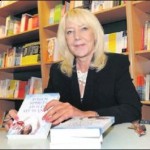 Interviewed by Patrick Bridgeman
Interviewed by Patrick Bridgeman
Margaret Brazil had her first psychic experience, “seeing a room full of spirits” late in life. Now 62 years old, spirits utilise her in every way to convince the people who come from all over the world to see her that they are present, and that they are very real.
The best readings are usually to those who are sceptical. The spirits go all out to prove their existence – to show off! There will be fireworks! It’s good to be sceptical, not to be gullible. Plenty have come through my door sceptical, but nobody has ever left unconvinced. Nobody can explain or contradict the evidence that’s given through me in a private reading.
I had my first psychic experience over 20 years ago. I am clairvoyant, clairaudient and clairsentient. I’m a “medium” in the real sense of the word in that I act as a go-between for clear and lengthy two-way conversations between the person and the spirit or spirits.
There is no secret. None of us are Chosen or are Special. Some of us just develop this gift, maybe through pain or heartache, while others might live their lives busy with other things and untouched by quiet thought or meditation.
At the beginning, I was more amazed than the people who came to me by what was coming from my mouth. I wasn’t sitting down trying to “home in”. In fact, I had to teach the spirits manners after a while. It’s like having children in the house and needing to teach them their place. I had to learn to control them. They can’t just butt in, all of the time, into my life. I have to live normally too. Although, if there is something extreme, they will try to get word to the family by appearing and speaking regardless.
One night I was sitting alone at home when I saw a movement beside me. On the white wall opposite me, an oval frame “appeared” and in it a picture of my father – who died in 1969. As true as God. As though I was watching a short film, I could see him walking from the bus stop on the Quays, down O’Connell Street, wearing his hat and coat and with a newspaper folded under his arm. I watched this for a good five minutes. At least. I kept looking away, looking back. I wasn’t seeing things. Now, if someone has an explanation for that, I’d love to hear it. Because I don’t.
I’ve a private phone number and I don’t tend to give it out. But two decades ago, it started ringing a lot. Every day. People looking for readings. I’ve never asked anyone how they heard of me. Over time, I came to trust that they were meant to find me. That I can do something for them. That I was meant to see these people who found me. That I must have something to give them. There are no coincidences.
I’m inclined to see each person only the once, unless they really want to come back again. I wish for them to be at peace, to find comfort and then to live their lives, not to become caught up in the dead.
Also, I’m not a fortune teller. People shouldn’t come to me if they’re looking for that. Nor am I a healer. I can’t even look after myself most of the time. Rather I’m a channel through which people who have passed on can communicate with and heal their loved ones. I can’t heal anybody, but I can facilitate wonderful healing that comes from this higher level.
Whatever God it is you believe in, He does not keep secrets from people who take the time to talk to Him.
Spirits are always just a thought away.
At the end of our interview, as I was about to say goodbye, Margaret asked me, “Who is the other Patrick?” My Granda Paddy popped into my head and she went on to provided me with evidence that it was him who was communicating with me through her. He told me that he was very proud of me because I was doing something that I loved, and that, while he didn’t want to take credit for where I now was, he’d always been there beside me, giving me guidance and looking after me. Thanks Paddy!
To order a copy of Margaret’s book, “When Spirits Hold My Hand” visit www.poolbeg.com


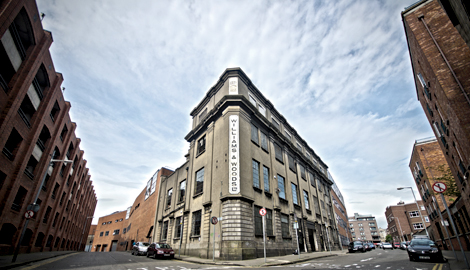

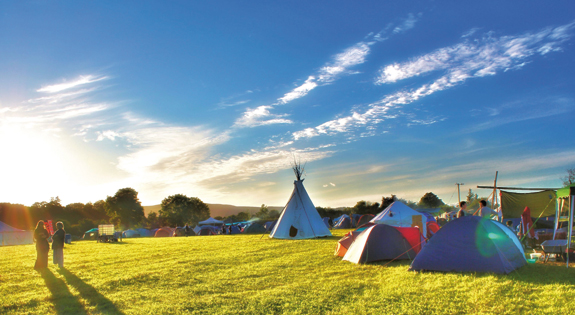

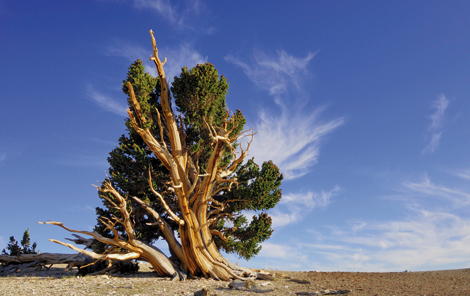

![civrac_home_main_image-150×150[1]](https://www.positivelife.ie/dev/wp-content/uploads/2009/09/civrac_home_main_image-150x1501.jpg)
